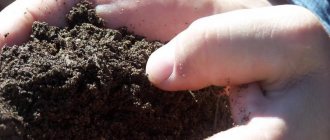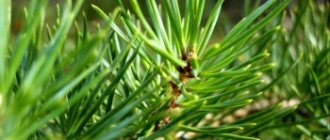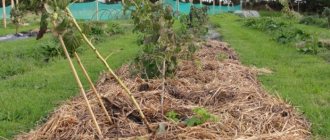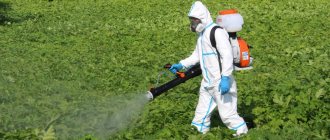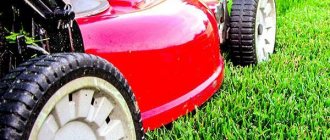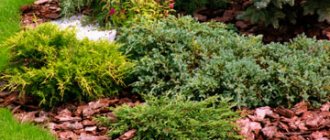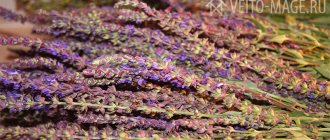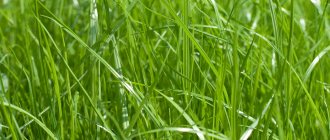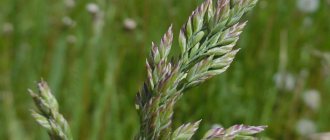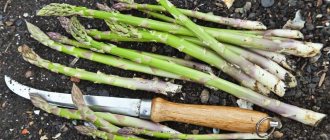Mulching with grass is an agrotechnical measure with the help of which more favorable conditions are created for plants and soil.
However, its effectiveness depends on many factors.
After all, improper preparation of collected vegetation, carried out without taking into account its species and the general situation on the site, can not only block the entire beneficial effect, but also cause significant harm.
Therefore, it is very important to understand not only the general principles of mulching, but also the processes that occur in the soil and the mulching layer.
From this article you will learn:
- how and from what to make such mulch with your own hands;
- how and with what to chop/chop grass;
- Is it possible to mulch with grass, including lawn grass, cucumbers, cabbage, peppers, potatoes, put fresh grass under tomatoes, strawberries, raspberries, roses and other crops in greenhouses and open ground;
- about the benefits of mulch from mowed grass for plants, and under what conditions it can cause harm;
- how to mulch beds correctly;
- about hot grass for mulching - what it is, pros and cons, how to use it.
What can be used for this?
To answer this question, it is necessary to understand how grass that is mowed or separated from its roots in any other way affects the soil and plants.
Once on the soil surface, such vegetation reduces moisture loss caused by evaporation , and also makes it very difficult for snails and slugs to live, that is, it performs the same functions as mulch made from any other materials.
In addition, it protects plant roots from summer heat and winter frost, although it is less effective than mulch made from sawdust or shavings.
That is, any healthy vegetation separated from the roots is suitable for use as mulch, however, in some cases, preliminary preparation of the material will be required.
Weeds
Despite the fact that weeds are also grass, the situation with them is somewhat different, because they are suitable for mulching only until mature seeds appear . If they have already produced seeds, then trying to use them for this agricultural activity will only lead to their rapid spread throughout the site.
However, even they can be used as mulch if they are first subjected to liquid composting, which we talked about here.
The advantage of liquid composting is that the aqueous environment dramatically increases the activity of bacteria, due to which they break down organic matter faster and more efficiently .
This means that after 3–6 weeks most of the seeds will lose their viability and will not pose a threat to cultivated plants. In addition, a by-product of such preparation is a liquid fertilizer, which can be used as a good complex fertilizer.
Depending on the degree of decay, it can either fill the soil with humic substances (humates), accelerating the development of plants, or accelerate the process of soil regeneration, attracting worms that will process all organic remains and loosen the soil.
The disadvantage of such preparation is the deterioration of the protective properties of mulch in relation to summer heat and winter frosts, however, this problem can be compensated for by increasing the thickness of the mulch layer .
In addition, the more rotted the starting material is during liquid composting, the less effective it is at attracting worms, since most organic matter has already been fermented and processed into intermediate or final products.
Therefore, such mulch has less effect on the process of soil regeneration, but quickly turns into humic substances, which are natural nutrition for plant roots.
Plants with diseases
A plant affected by some kind of disease is a source of infection even after it is separated from the root as a result of uprooting or weeding.
Moreover, even rotting under natural conditions does not always destroy pathogens.
Therefore, you first need to determine the type of disease , and then compare it with the cultivated plants located on the site.
If this type of disease does not pose a threat to plants on the site, then such grass can be used for mulching. If cultivated plants are susceptible to this disease, then such grass cannot be mulched even after it has completely rotted, including using liquid methods.
Plants affected by pests
Garden and vegetable pests often leave eggs or larvae on the grass, and when this happens, the vegetation over a fairly large area is affected.
Such grass cannot be used for mulching even after rotting in a barrel, because the larvae and eggs of many pests are very tenacious, so they remain viable even after exposure to bacterial enzymes .
If such grass is used for mulching, then the grown pests will move on to the cultivated vegetation and greatly harm it.
What mulch should not be used?
It is not recommended to use plants treated with chemicals as mulching materials, as well as grass growing near roads and industrial facilities.
Harmful substances absorbed by such plants, when rotting, will poison the soil, reducing the quality of the future harvest.
If used incorrectly, mulch from freshly cut grass can harm plantings:
- When using freshly cut grass, it is important to ensure the breathability of the layer by thoroughly chopping the plants. If this is not done, harmful fungus may appear in the mulch.
- An excessively thick layer of mulch and excessive moisture in the covered soil can harm plants - the soil will breathe poorly, reducing the growth rate of crops.
- For mulching, it is permissible to use only grass that is not in the flowering and fruiting stage. Seeds and roots of mature grasses can germinate in wet conditions, littering the soil and robbing crops of nutrients.
- You should not lay mulch too early in the spring - the soil will not have time to warm up.
Preliminary preparation of collected green mass
For mulching, grass is used in the following states of aggregation:
- fresh;
- dry;
- partially rotten.
Fresh
If you plan to use freshly cut grass as mulch, then no preparation is required - it is immediately laid out around the area .
This material contains the maximum amount of nitrogen, so its consumption by humus-forming bacteria compensates for the excess of this material and after mulching the soil does not lose nitrogen.
The disadvantage of this method is the strong toxic effect on cultivated plants, which is stronger the less compatible the plants are.
manure is best suited for fresh mulching , which after ripening is cut or trampled down so that they die and begin to rot.
Partially rotten
To obtain partially rotted material, the collected vegetation is placed in a composter or barrel for the time necessary for the rotting to reach the required level.
By waiting for one or another stage of decay, both the mechanical properties of the mulch and its attractiveness to worms are regulated, this makes it possible to obtain mulch that is better suited to a specific situation than other materials.
The advantage of partially rotted mulch is the high content of transition substances, due to which bacteria produce humates much faster than in fresh grass, and there are still quite a lot of substances attracting worms in such material.
Dry
To dry, the vegetation is collected in stacks and left in a well-ventilated and lit area, then, when the humidity drops to the required level, it is used for mulching.
If it needs to be stored until spring, then the dry green mass is placed in a closed, well-ventilated and insulated room. This material contains less nitrogen, so in spring and autumn the area mulched with it must be fertilized with nitrogen-containing preparations.
In addition, dried vegetation is much less toxic than fresh, so even grass that is usually incompatible with cultivated plants on the site can be used for mulching.
The main advantage of dried grass is that it can be mulched even in early spring, when fresh grass is not yet available. The main thing is not to lay it close to cultivated plants.
At the same time, dry mulch retains the attractiveness characteristic of fresh vegetation for worms, due to which its application to the site leads to an increase in their number, and therefore increases the efficiency of soil regeneration processes .
It is also more effective than fresh grass if it is necessary to protect plant roots from heat or frost. The only downside is that violation of drying and storage conditions can lead to mold or rotting, which will negatively affect the effectiveness of the mulch.
Mulching and watering when preparing beds
By the way, you also need to moisten the soil wisely! This is another instructive story that happened at the beginning of my “gardening career”.
Our soils in the Ark are mostly clayey and heavy. Root crops are especially difficult to grow in such soils. So you have to add sand and other components that loosen the soil to the beds. And, of course, plant and plant green manures that improve the composition and structure of the soil. Nowadays, almost all of my beds are “living”, with fertile, loose soil, but at the time mentioned in the story, I was just beginning to develop a vegetable garden. I just couldn’t grow a good carrot - it grew small and clumsy, so I invited my neighbor Nadezhda Petrovna, a famous Kovchegovsky gardener, as an expert.
For almost two hours we made the “correct” bed: we removed the turf, dug up, or rather, loosened the soil with a special pitchfork, removed the roots of perennial weeds, added sand, humus, ash, and mowed grass for mulching. All that remains is to water and mulch the bed, and then leave it to “ripen” for a week.
Since Nadezhda Petrovna urgently needed to run away, she entrusted me with carrying out the last stage of the work myself, giving clear instructions: “Mulch the bed with grass and leave the fields!” What could be simpler? But my logic came into play here: “If you first mulch and then water, then the water will not get into the soil, because the mulch will retain it. Apparently, the neighbor got it wrong: first you need to water it, and then mulch it!” I grabbed a watering can and started watering the garden bed. Streams of water ran joyfully, and in a couple of minutes the clay rivulets turned the loose soil into a homogeneous, shiny surface - like icing on a cake. Having mulched the watered bed with grass, I began to wait until it “ripened”.
In the evening of the same day, Nadezhda Petrovna came by to check how I had finished the garden bed. I happily reported:
— I watered and mulched everything!
— First you mulched and then watered? – the neighbor clarified.
- No. I thought that water wouldn’t get into the soil through the mulch layer, so I watered it first...
While I was loosening the bed again, Nadezhda Petrovna clearly explained that by watering the unprotected soil, I again compacted the soil, the clay clogged all the “vents,” which means soil microorganisms would not be able to actively reproduce. Therefore, the beds, especially new ones, must first be mulched with a thin layer of grass (and I was wondering why we mowed so little grass), and only then carefully water them from a watering can with a sprayer, preferably in 2-3 stages. The soil itself will absorb moisture and remain loose.
Preparing the bed - the next stage
Nadezhda Petrovna sows carrots in prepared beds.
After a week, such a bed needs to be thoroughly mulched again. After a few hours, you can make furrows by spreading the grass a little, sow seeds in the furrows, lightly cover them with light soil (for example, a mixture of peat and sand, or sand and fertiliser), and mulch the spaces between the furrows with additional grass.
If you plan to plant seedlings in the garden bed, then you only need to water the seedling holes well, and after planting, mulch the garden bed with a thick layer (10-15 cm) of cut grass (ideally chopped with a lawn mower).
I learned this lesson well! Now I try to do any plantings this way! In early spring, when the grass has not yet grown and there is nothing to mow yet, I use last year’s dry grass from the beds as mulch. Well, in May I start mowing - first the nettles, and then other grass comes up!
How to cook it yourself?
In order to prepare the collected vegetation for use as mulch, it is necessary to chop it using any of the devices that we talked about in this article.
This operation is not needed only when the average length of the cut fragments does not exceed 10 cm, that is, the grass was collected from a lawn that is regularly mowed. If the material is obtained as a result of weeding or pulling out weeds, then grinding is always necessary.
then dried or composted to reach the desired condition. The choice of the required state and the method of bringing the plant mass to it depends on the purposes of mulching.
Fresh and dry material is used if mulching is carried out for:
- reducing water loss due to evaporation;
- weed and pest control;
- protection from heat and cold.
If the mulch must quickly affect the structure of the soil, as well as fill it with nutrients, or if you need to lay it close to the plants, it is better to use vegetation that has partially rotted in the barrel .
If, in addition to all these effects, mulch must compensate for the microelements spent on plant development, then it is better to take grass composted with the addition of manure and other components. Read more about this type of grass preparation here.
Mulching – what is it?
Mulching means covering the soil with one material or another in order to protect it from excessive moisture loss and drying out, prevent weeds from developing and create an excellent microclimate in the soil that will attract earthworms - natural cultivators and soil enrichers. That is, mulching the soil allows the owner of the site to practically not think about his plantings - only water occasionally, pull out especially arrogant and large weeds and perform some other routine tasks.
The only drawback of mulching is that the beds do not look the most presentable, but they are not laid out for beauty, so the aesthetic component can be slightly neglected. In addition, mulching certainly has much more advantages. And for aesthetic pleasure, it is better to plant flower beds and mow the lawn.
So, the main advantages of mulching:
- maintaining soil moisture;
- slowing down weed growth;
- leveling temperature changes during the day;
- preventing the formation of a dry crust on the surface of the earth, which reduces the possibility of root respiration of plants;
- creating a suitable microclimate for earthworms and beneficial microorganisms;
- protection against the development of fungal colonies.
What can you mulch with?
All vegetation suitable for mulching can be divided into :
- lawn;
- meadow (forbs);
- weeds.
Lawn grass has a beautiful appearance and poor vitality, so without lawn care it will quickly give way to more tenacious forbs or weeds.
In addition, the seeds of lawn vegetation germinate well only in specially prepared conditions, so the likelihood of this type of vegetation spreading through mulching is zero .
Forbs, that is, any types of grass that grow in meadows or fields, and also often appear in the garden or vegetable garden, are much more viable than lawn grass or even most cultivated plants.
Therefore, vegetation mowed after the seeds appear, even if they are not yet ripe, can be used for mulching only after partial or complete rotting in a barrel.
Weeds are the most viable plants that take over living space from any other plants and easily choke out lawn grass and cultivated plantings.
Therefore, after even immature seeds appear, weeds should not be used for mulching, unless after complete rotting in a barrel or composter.
But even after such treatment, there remains a fairly high probability of their spreading throughout the garden.
In addition, weeds that have been torn out of the ground along with their roots cannot be used for mulching, because even after rotting they remain viable and, once in fertile soil, they will immediately begin to take over the territory, suppressing other plants and depriving them of nutrition.
Lawn
Lawn grass does not contain weed seeds , so its mulch is safe for any plants. In addition, after mowing the lawn, the roots of the grass remain in the ground, so even theoretically it will not be able to begin to take over the living space of other plants.
This is especially important in cases where the lawns, for some reason, were planted not with special plants, but with forbs, trying to create a more natural appearance of the area.
In addition, lawns are mowed regularly, otherwise their appearance becomes noticeably worse, so the length of the mowed vegetation is optimal and can be used for mulching even without prior chopping.
Therefore, freshly cut grass from a lawn mower can be used to mulch any garden and vegetable crops, but its use is most effective where plants are planted to improve the appearance of the area , and not for the sake of growing fruits.
It is not suitable for mulching any fruit plants (such as tomatoes, peppers, strawberries and others), but if, apart from the grass from the lawn mower, there is nothing to mulch them with, then after laying the mulch layer it is necessary to water it with preparations containing microelements.
Forbs
Forbs differ from lawn grass in the variety of species, so the mulch made from it contains much more microelements, which means it is better suited for fruiting plant species.
The most effective are forbs mowed during the period of active flowering , because it is then that the plants draw a maximum of microelements from the soil, which then return to the ground with fallen petals.
If this material is obtained not as a result of mowing, but after processing the area with a walk-behind tractor, then it can be used for mulching only those areas where it is planned to plant forbs.
The use of such mulch in areas planted with cultivated plants can lead to the fact that the surviving roots will reach the ground and the area will quickly be taken over by forbs, which are noticeably more vital.
Weeds
Weeds that are freshly cut, pulled out, or left after weeding cannot be used at all for mulching without drying or rotting, because several days after separation from the root and several years after separation of the root from the ground, weeds can still take new roots.
Therefore, weeds that are mowed or cut down as a result of weeding can be used only after rotting , and that vegetation that has been pulled out by the roots cannot be used even after rotting.
After all, even a small part of the root that survived during decay, once in the ground, will quickly give new roots, after which the weed will begin to take over the area, drowning out the cultivated plants and depriving them of nutrition.
Grass in a summer cottage
Before the spring sun has time to warm up, green grass has already crawled out of the ground and continues to grow actively. If it is not trimmed in time, the entire area will turn into a “jungle”, which will become a haven for harmful insects (for example, ticks, dangerous to people and animals).
Important! Weeds quickly take over an unmowed piece of land, gradually moving into garden beds, clogging the berry fields. In hot summers without rain, tall vegetation dries out and becomes a fire hazard.
Where to put the cut grass
Therefore, the question of whether to mow or not should not even arise.
The number of visits by the mower is determined based on some features:
- They begin to mow the lawn when the grass is taller than 10 cm;
- leave a green carpet at least 5 cm high - shorter grass will dry out quickly;
- the mowed lawn must be even in height over the entire area;
- The optimal number of mowings in the warm season is once every 2 weeks, but if the summer turns out to be rainy, then mowing is done more often.
In autumn, the grass slows down its growth, and the summer resident can mow less often. The last visit is made just before frost, so that the trimmed lawn plants can safely overwinter.
The amount of grass cut per season depends on the size of the cultivated area. But even in a small area there will be enough of it to create a dilemma about where to put the grass after mowing the lawn.
Compost heap at the dacha for grass disposal
In the open ground
The soil is mulched for the first time after the height of the young plants exceeds 5 cm. At this age, the plants do not yet have a strong trunk, which means that care must be taken when laying mulch around them.
Therefore, all the mulching material is first laid out around the trunk, then the space between the plants is filled. Layer thickness 1–3 cm . In addition, there should be at least 2 cm of space between the lower leaves and the mulch, otherwise the leaves may get sick from contact with rotting grass.
For the first mulching, it is necessary to use partially rotted lawn grass or forbs that have lain in a composter or compost heap for at least a year.
Moreover, the greatest effect will be achieved by using compost , which contains manure or litter and other components.
If you use fresh vegetation, then there is a high probability of burns on cultivated species caused by enzymes released by bacteria.
The next mulching is carried out at intervals of 3–6 weeks, and the more often this activity is performed, the thinner the new mulching layer should be.
After laying each new layer, the cultivated rocks are watered with a solution that includes ash and any nitrogen fertilizers , including manure or litter, which we talked about here. Nitrogen fertilizer compensates for nitrogen, which is actively consumed by bacteria, and ash neutralizes soil acidification.
If the planted plants need to be hilled up, then mulch is applied on the same day or a few days earlier, thanks to this the soil will cover part of the grass and speed up its rotting, which means that the plants will quickly receive additional nutrition.
This use of grass does not reduce the effectiveness of mulching, because one of the main objectives of this action is to reduce moisture loss due to evaporation from the soil surface.
If, after hilling, it is necessary to protect the plant from slugs, then the mulching material is divided into 2 parts, one is laid before hilling, and the other after .
Spring mulching
Mulching between rows with freshly cut grass
In the spring, while the soil is still wet, I prepare the bed like this: I go through the soil with a flat cutter, adding ash or dolomite if necessary, then I lay out freshly cut grass 10-15 cm thick between the rows, I water the rows themselves from a watering can without a sprayer, then I sow seeds, I cover the top with regular dry sand (or peat, just not wet fertiliser), then just a little grass on top of the crops (so that the ground shines through). I cover the bed with white spunbond on the arches and that’s it. Then I approach the garden bed after 3-4 weeks, remove the white cover, remove sprouted weeds, water if necessary (most often this is not necessary) and mulch with a new portion of freshly cut grass (in a thick layer).
Planting seedlings and mulching
I lay out the mulch in a strip, make holes for the seedlings and water them (here I have almost finished the bed, I am planting the last row).
When you plant seedlings in a garden bed, you can use different mulching methods: first plant the plants in spilled holes, and then mulch everything. Or first mulch all the soil, and then spread the mulch, make holes, water them and plant the seedlings.
This year I came up with my own version: I mulch
Then I plant seedlings in the holes and mulch them with a new strip of freshly cut grass.
strip of earth, make the first row of holes along the edge of the mulch, water them, plant seedlings (the plants lie neatly on the strip of mulch), mulch it with a second strip of grass. On its edge I make the next row of holes, etc., until the bed ends. I found this method to be the most convenient! Try it too!
In the greenhouse
The general principles for using mulch from cut grass for tomatoes, cucumbers, peppers and other crops in a greenhouse are the same as in open ground.
In this regard, the differences relate only to the method of preparation and the condition of the material.
When any fresh grass, including that from a lawn mower, rots, bacteria release a lot of carbon dioxide, so its amount in a greenhouse or greenhouse is constantly growing, which can pose a threat to anyone who will work inside for a long time.
To reduce carbon dioxide emissions, it is necessary to use partially or completely rotted vegetation , which has been kept in a compost bin or composter for at least a year.
However, before using even such mulch, it is necessary to check the operation of ventilation, without which the proportion of carbon dioxide will constantly increase.
in autumn
The main purpose of autumn mulching is to restore soil structure and replenish nutrients and microelements spent on plant development.
Since worms are the most important participants in the process of soil restoration, autumn mulching should attract them to the site as much as possible and provide them with sufficient food.
Any fresh or dry vegetation is suitable for this, with the exception of weeds that have retained at least a small piece of root. The prepared material is scattered over the area in a layer 2–5 cm thick, then the area is plowed and disked.
Without plowing and disking, such mulching will not be effective enough , and some of the thickest stems will not rot until spring. Small areas, instead of plowing and disking, are first treated with a walk-behind tractor and then leveled with a rake.
Another way to accelerate decay is to treat the mulch with bacterial preparations, which can be purchased at most stores selling goods for gardeners and gardeners.
These preparations will not affect the attractiveness for worms and will accelerate rotting , so that by the time of sowing the mulch will completely turn into humus and significantly improve the soil structure, as well as fill it with nutrients and microelements.
You can also reduce the labor intensity of the process by mulching with partially rotted compost, which has lain in a composter or heap for at least six months.
Moreover, the compost should contain kitchen waste , including trimmings of fruits or vegetables, which contain enough complex organic substances to effectively attract worms even after being in the composter for such a long time.
Recommendations from experts
The use of mulch depends directly on the quality of the soil and weather conditions. It is highly undesirable to perform this procedure on clay soil, which is already characterized by high humidity. As for unventilated greenhouses, where moisture stagnates and there is a noticeable lack of sunlight, mulch can cause rotting of the plant’s root system.
We should not forget that there is a difference between spring and autumn mulching . If in the spring the procedure is performed primarily to maintain soil moisture, then autumn mulching serves to protect the root system from the first frosts. Both dry grass and freshly cut grass are quite suitable for moisture. As for the autumn period, it is more advisable to use dry grass.
The grass flooring should be changed periodically at any time permissible for this, as there is a risk of pest development. Herbal mulch, being a natural substrate, attracts many insects (caterpillars, worms) like no other covering. If worms, eating mulch, turn it into compost necessary for the soil, then pests concentrated in the grass flooring that live underground, multiplying, can spoil the root crop or destroy the entire root system.
Thus, it turns out that in the summer the mulch must be changed periodically (the soil needs to dry), and in order to avoid the emergence of pests closer to winter, it is recommended to completely collect it and burn it.
The nuances of using mulch for different crops
Despite the fact that the general principles of preparing and using grass as mulch are the same, there are nuances that will help you do this more efficiently, which will have a beneficial effect on the yield and quality of the fruit.
However, it is necessary to understand that the maximum effectiveness of this measure will be achieved only when mulching is part of the soil fertilization and regeneration system.
Moreover, all actions of this system must necessarily complement and not duplicate each other.
Tomatoes
Tomatoes are very heat-loving plants, so the first mulch layer on open ground should be laid after the ground has warmed up well, that is, when the daytime temperature exceeds +20 degrees and lasts at least a week.
If tomatoes are planted in a greenhouse, then mulching the soil can be done after the length of the tomato stem exceeds 5 cm.
Before fruit ovaries appear, compost that has been stored for at least a year should be used as mulch.
At the same time, it should contain tomato green manure, that is:
- rye;
- lupine;
- oats;
- rape;
- white mustard;
- alfalfa;
- clover.
After the fruit buds appear, you can use dried lawn grass or dried forbs, that is, one that has lain in the sun for 1–2 weeks after mowing (however, it is better to use partially rotted compost), as well as completely rotted weeds without seeds.
After harvesting, the tomato stems are trampled, then green manure is planted. If it is not possible to plant green manure, then the entire area is covered with a layer of freshly cut green mulch, including any grass and weeds without seeds.
Then the area is sprinkled with a small amount of manure and lime , as well as potassium-phosphorus fertilizers and watered with water.
cucumbers
The first mulching should be done after the cucumbers have real leaves and grow a little.
Moreover, only compost that has spent at least 2/3 of the time required for complete rotting in a composter or pit can be used as a mulching material.
The next layer is laid after the fruit ovaries appear, and the third layer after the fruits acquire a clear shape. It is best to use partially rotted compost , but you can also get by with slightly dried lawn grass or forbs, sprinkling them with ash on top and watering them with a properly diluted liquid fertilizer.
After harvesting, the stems and leaves of the cucumbers are trampled down, then green manure is planted (the same as for tomatoes), and after the green manure has ripened, they are also trampled down and mulched with any vegetation, except weeds with seeds, or partially rotted compost.
To speed up decay, the mulch layer is sprinkled with ash and watered with an aqueous solution of bacterial preparations.
Strawberry
Strawberries are a perennial plant, so completely different technology and materials are used to mulch them. The best mulching material for strawberries is considered to be partially rotted compost, which contains green manure from this plant , that is:
- legumes;
- rape;
- dill;
- fennel;
- marigold;
- rye.
Sequencing
Immediately after the snow melts around each plant, the winter mulch is raked to the sides, clearing a circle with a radius of 7–10 cm, this is necessary so that the soil warms up faster.
At the same time each strawberry bush is maintained , that is, diseased and excess tendrils are removed, but if there is a suspicion that the roots of the plant did not survive the winter, then they remove it entirely, and in its place one of the tendrils of the nearest bush is planted and pinched.
After the flower ovaries appear, the old mulch is returned to its place, then the soil is carefully loosened to a depth of 1–2 cm, without getting close to the roots of the bushes. Then the first mulching is carried out, and the layer thickness should not exceed 1 cm.
After the first berries have formed, another mulch layer of the same thickness is laid. The third mulch layer is laid while the berries are ripening , which will greatly reduce their watering, which means the berries will be sweeter and can be stored noticeably longer.
After harvesting, regular maintenance is carried out, that is, diseased tendrils or plants are removed, and weeds that have made their way through the mulch are pulled out. Excess tendrils, as well as healthy leaves, can be composted.
However, any diseased parts of plants must be destroyed, because rotting is poorly suited for destroying pathogens. also necessary to destroy plants affected by pests or their parts .
From spring to autumn, it is advisable to grow green manure on a designated area, and their green mass must be collected before the fruits form and the trunks become coarser.
As it ripens, the green mass of green manure is cut off and added to the compost, making it as balanced as possible and better suited for mulching strawberries than fresh grass.
Autumn features
In autumn, the soil is loosened, then covered with a layer of mulch 3–5 cm thick, which will protect the roots of the plants from frost, and only partially rotted compost is used .
If you mulch the area with fresh grass, there is a high probability that the mustache will be damaged by enzymes released by bacteria.
This mulching procedure allows you to grow strawberries in one place without depleting the soil for 5–7 years, whereas even with the use of modern fertilizers, the maximum period of effective fruiting in one place does not exceed 2–3 years.
To prepare a new area for transplanting strawberries, it is planted with green manure in the summer or early autumn , and when they have gained sufficient green mass, they are trampled down and mulched with partially rotted compost, after which they are watered with water and bacterial preparations.
After the snow melts, the compost is raked and after the soil has warmed up, the bushes prepared for transplanting are planted.
Cabbage
Cabbage is very demanding on the quality and nutritional value of the soil, so mulching should not be a one-time action, but a system, because only this approach will allow you to get large, healthy heads of cabbage.
Proper soil preparation begins in the fall, immediately after harvesting, and involves planting green manure - legumes, clover and others - followed by trampling them down and mulching with a compost mixture.
If you use only partially rotted grass to create a mulch layer, after 3–5 years the soil will become poorer, and the cabbage will have to be moved to another area. If, in addition to grass, you use manure and other components, then you will have to transfer the cabbage to a new plot in 8–10 years.
Before laying mulch, it is advisable to loosen the area using a Fokin flat cutter or any other suitable tool that gently and shallowly loosens the soil.
Immediately after this, the area is mulched with partially rotted complex compost, and in warm regions you can even use fresh/dry lawn grass or forbs, a layer thickness of 3–7 cm.
To speed up decay, plant material is watered abundantly with water and bacterial preparations .
In the spring, immediately after the snow melts, the remaining mulch is raked to the side, forming an empty space the size of the future hole or hole, and the soil is slightly loosened.
If cabbage is planted with seeds, then the autumn mulching material is returned to its place after the appearance of several true leaves at least the size of a child’s palm.
If seedlings are planted, then the autumn mulching material is returned to its place immediately after the first watering, that is, on the same evening when the seedlings were planted.
The next mulching is carried out after the appearance of the fruit ovary. When the head of cabbage reaches the size of a child's head, you can lay another layer of mulching material , using almost completely rotted complex compost.
Raspberries
Raspberries are a very unpretentious and tenacious plant that is much less afraid of summer heat than most garden crops. In addition, replanting a raspberry tree to a new location is a rather complex and time-consuming process, so mulching should be part of the overall plant and soil care system.
In early spring, when the snow melts, winter mulch is cleared around the trunk so that the roots warm up faster .
The soil is carefully loosened, trying not to go deeper than 2–5 cm, so as not to damage the roots located near the surface.
After the first leaves appear, the autumn material is returned to its place and a new layer of mulch is immediately laid, which can be used as partially rotted compost from lawn grass or forbs.
The second mulching is carried out at the beginning of summer, before the onset of intense heat, and in this case it is better to use partially rotted compost with any number of components.
The third mulching is carried out after harvesting, on remontant varieties after the first harvest, and then another after the second harvest.
It is the third application of mulching material that is most important , because the effectiveness of the soil regeneration process will depend on it.
Therefore, for final mulching, partially or 2/3 rotted compost with the maximum number of components is used, including:
- manure or droppings;
- ash or lime;
- kitchen vegetable waste.
also needs to be loosened : if you have a Fokina flat cutter, then it is loosened before adding mulching material, but if you have a manual cultivator, then it is loosened after laying the new mulch, because this way it will mix better with the soil.
Potato
The first time grass mulch is applied to the beds immediately after planting seed potatoes, the thickness of the layer, as in the photo, above the holes is 1-2 cm, and above the surrounding area - 4-6 cm.
This operation requires only partially rotted compost .
The second mulching is carried out after the first or second hilling, and the same material is used.
The third time they mulch after the green manure has ripened, and you can take either fresh lawn grass or forbs (in this case, after watering, you will need to treat the mulch layer with bacterial preparations), or partially rotted compost.
This procedure for caring for potatoes allows you to plant this plant in one place without loss of yield for 5–8 years.
Peppers
These crops are mulched 2 times - the first time in May-June , when the daytime air temperature exceeds 20 degrees and the soil warms up, and the second time after harvesting and ripening of green manure .
In greenhouses, where it is possible to obtain 2-3 crops per season, mulch is applied for the first time after the soil has warmed up, and then mulched immediately after planting the pepper seedlings. After the last harvest is harvested, green manure is planted, then trampled down and covered with a new layer of mulch.
Partially or 2/3 rotted complex compost is used as mulch, which is used after planting seedlings, and if it is not available, dried last year's hay (including forbs) or straw will do.
In autumn, you can also use partially rotted compost or dried vegetation , but in the latter case it is necessary to water it with bacterial preparations to speed up decay.
In the spring, if not all the mulch rots, you need to rake it in the places of future holes so that the soil warms up, and after it warms up, first level the old material, then pour in new material.
Fruit trees and bushes
Fruit trees and bushes are mulched three times per season:
- after the soil warms up;
- during the summer heat;
- after fruiting.
Young plants that have not yet had time to form a thick, strong bark, as well as any shrubs, are sprinkled only partially or 2/3 with rotted compost .
Trees that are 5 or more years old can be sprinkled with any dry grass or partially rotted compost. The optimal layer thickness is 5–8 cm.
The first and third mulching must be done immediately after loosening the soil under trees and bushes, which mixes the rotted remains of the previous layer with the soil.
Roses
The method of mulching roses is very different from that adopted for other plants , because for them it is unacceptable to increase the soil level, because this will spoil the appearance of the flowerbed or lawn.
Each mulching with grass always begins by loosening the soil using a special device - a Fokin flat cutter or a hand cultivator - to mix some of the rotted organic matter with the soil.
Next, the application of mulching material is carried out in the following order :
- carefully collect and remove the remaining organic matter from the previous application, which can be sent to compost or applied to other plants;
- if necessary, remove the top layer of soil to ensure the same level throughout the entire area, then dig a small hole and fill the top layer of soil there;
- remove all emerging weeds;
- lay partially rotted compost or dry grass, including forbs, around the plant; if dry straw is used, then it is necessary to retreat 1–3 cm from the trunk.
The mulch layer is laid either over the entire lawn or flower bed, or only around the roses, the optimal layer thickness is 7–10 cm.
The first mulching is carried out in the spring, after the soil has warmed up (mid-late May), the second - a month after the leaves have fallen. In addition to mulching with grass, it is advisable to use green manure.
What crops can be mulched with grass?
It is convenient to mulch the tree trunks of trees and berry bushes with freshly cut grass. You just need to remember that in late autumn the remnants of this mulch must be removed, since insect pests can spend the winter in it. Ideally, the grass that lay under the bushes in the summer is burned or composted, and new grass is laid in its place.
Autumn mulching with grass well protects the roots of perennial plants from early frosts, when the snow has not yet fallen and the soil can freeze to a great depth. Unlike plastic films, roofing felt and other similar materials often used by gardeners for these purposes, grass does not create an overly dense and airtight layer, which can cause damping off during winter thaws.
The grass is also suitable for beds with carrots, especially when the root crops are already beginning to form. The rule here is simple: the younger the seedlings, the finer the mulching material should be cut. The grass layer can lie on carrot beds until the first frost, especially if late harvesting of root crops is planned.
Cucumbers, melons, as well as tomatoes, peppers and cabbage should not be mulched with cut grass - they are too easily infected with various rots.
Latest articles about gardening
Growing tomato seedlings from seeds: tips and technology
How to grow lavender from seeds in open ground
Growing porcini mushrooms in a greenhouse
The benefits and harms of covering crops with lawn grass
Freshly cut vegetation poses a serious threat to cultivated plants, because bacteria in it actively secrete enzymes that break down complex organic substances.
Therefore, covering cultivated plants with fresh lawn or any other grass will cause a lot of harm.
However, if it is laid out in the fall on an area intended for planting cultivated plants next year , it will bring many benefits. After all, such organic matter will attract worms and increase the efficiency of the soil regeneration process.
If you cover cultivated plants with partially or completely rotted compost from lawn grass, they will develop in much more comfortable conditions, since such grass will not only effectively perform the functions of mulch, but will also serve as a good complex fertilizer.
Compost from grass clippings
What to do with the grass at the dacha after weeding
Experienced gardeners have long decided on the problem of where to put the cut grass in their dacha - they lay compost heaps. For this purpose, a special fenced area is allocated on the site. Some people use barrels (metal, wood), plastic bags, boxes, buckets, etc. to store raw materials.
The clipped greenery is immediately removed from the lawn and placed on the heap being formed. It is recommended to alternate the green mass with layers of soil from the garden, tops from the garden, mown weeds (without seeds), bird droppings, manure, and peat. You can also place food waste from your home kitchen here.
Making compost from grass
Components such as wood ash, stove soot, crushed egg shells, etc. add additional minerals to the compost. The maturation of decomposing materials is accelerated by regular moistening and shoveling the layers with a pitchfork.
Additional Information. Bioadditives (EM solutions) will help saturate the compost with useful microflora.
Grass is collected in a heap throughout the summer season. Compost under cover continues to decompose throughout the winter, and in the spring it is already used as a high-quality, complete fertilizer.
Pros and cons of "hot grass"
There are many videos on YouTube dedicated to the technique called “hot grass” or “active mulch”, developed by Natalya Smorchkova. This method is called almost the best means for mulching any plants.
At the same time, the authors of the videos talk about the activity of bacteria and other processes, for some reason keeping silent about the fact that the same thing happens in ordinary compost.
That is, they gave traditional compost a new name, but did not say the main thing - “hot grass” is not suitable for mulching, because bacteria do not have time to complete even the first stage of processing organic matter, so it contains a lot of enzymes that are dangerous for plants .
In order for “hot grass” to become suitable for mulching, it must first cool down, that is, the bacteria must complete the hydrolysis of organic matter and proceed to the acid-forming stage, and the content of dangerous enzymes that break down organic matter must decrease to a safe level.
In addition, the nutritional value of “hot grass” is noticeably lower than multicomponent compost , which is more balanced in its composition.
Also, supporters of the use of “hot grass” claim that any vegetation can be used to make it, including weeds and diseased grasses, but this leads to serious problems.
Video on the topic
We have prepared several videos that will help you better understand the issue of mulching with “hot” grass. After weighing the pros and cons, you can determine the pros and cons and understand whether it is worth using this method in your garden.
The authors of the first two videos talk about their experience and results of using active mulch:
From the following video you can find out how its author mulched peppers in his garden using “hot grass”:
The author of the following video, on the contrary, expresses his negative attitude towards this method of mulching:
